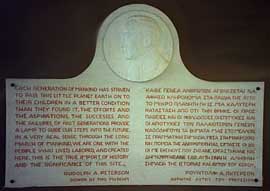The archaeological museum at Nemea was constructed
by the University of California as a part of the effort to make the results
of the excavations available to the visitor, and as a study and research
center. It was built thanks to the generosity of Mr. Rudolph A. Peterson,
and given to the Greek State on May 28, 1984, when it was opened to the
public.
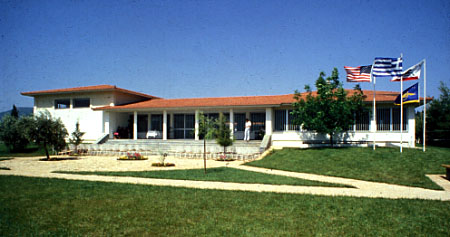
The foyer contains a display of early views of Nemea, and
especially of the Temple of Zeus. There are also marble plaques with the
names of the hundreds of private donors who have made the excavations at
Nemea possible. At the head of the list is the Thomas J. Long Foundation.
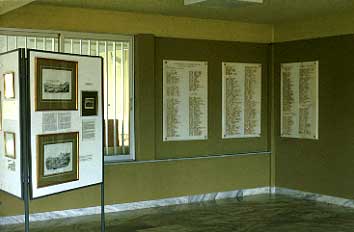
Also in the foyer is the plaque that contains the thoughts
that led Rudolph Peterson to contribute the museum. It was unveiled during
a visit by Mr. and Mrs. Peterson in 1982.
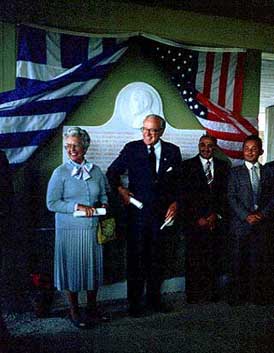
The central courtyard of the museum features an orange
tree, and the heavier architectural pieces from, for example, one of the
Oikoi, the Temple of Zeus, and other buildings at the site as well as other
pieces from ancient Phlius and elsewhere in the vicinity.

The main exhibition hall on the northern side of the museum
looks out onto the site with models placed in each of its three picture
windows so that the visitor may relate the artifacts discovered in various
ancient buildings with the remains of those buildings on the site. The
models are of the Panhellenic
Sanctuary of Zeus in 300 B.C., of the same area while it was occupied
by the Early
Christian community with its Basilica constructed over the Xenon, and
of the Early Hellenistic Stadium.
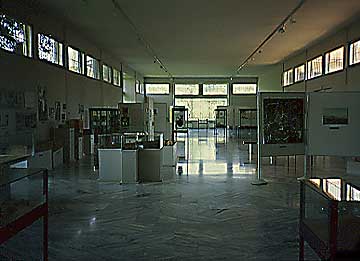
Other displays in the exhibition hall, including explanatory
text, photographs, and drawings, reveal the history of the site and the
activities that took place in various parts of it.

The parts of the museum that are not open to the public
include a conservation laboratory, a dark room, a library, a computer room,
and storage areas for the thousands of artifacts not on display.
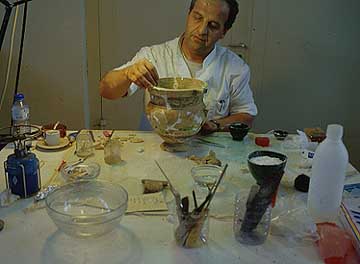
The eastern room of the
museum has now (2004) opened to the public. It contains Neolithic
and Bronze Age material from various sites, including the cemetery
of Aidone
some 8 kilometers west of Nemea in the valley of Nea Nemea.
The museum is open Tuesday through Sunday from
8:30 a.m. to 3:00 p.m., closed on Monday for cleaning. In recent
years, the hours in the summer have been extended to 7 p.m., in
which case the museum reopens on Monday afternoon. It is recommended
to call ahead to verify the hours: 27460--22739.
Top
of Page
|













